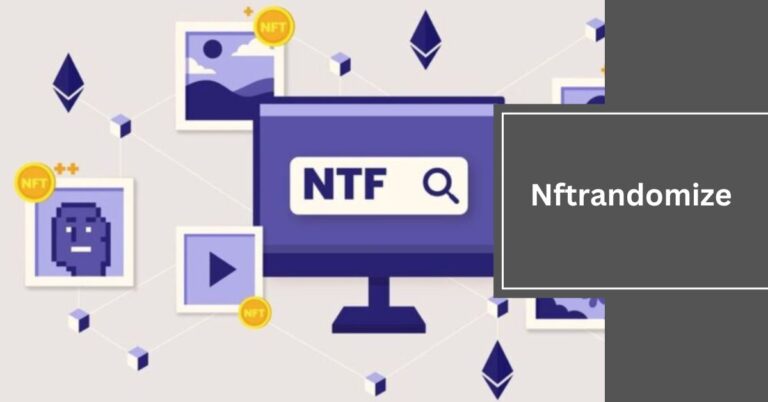When Doubled A Mild Reprimand – Improve Behavior With Our Gentle Guidance!
Getting a mild reprimand was a wake-up call. When doubled, it highlighted the need for self-reflection and growth. This experience taught me to value constructive criticism for personal improvement.
When repeated, a mild reprimand helps improve behavior and self-awareness. It encourages learning and growth without being too harsh. This method supports long-term personal development.
This piece will discuss the idea of ‘when doubled, a mild reprimand,’ examining how repeated gentle corrections can shape behavior, boost self-awareness, and support long-term personal growth.
What is the Power of Doubling in Reinforcing Gentle Reprimands?
When doubled, a mild reprimand refers to the practice of repeating a gentle correction or admonishment. By doubling the reprimand, typically in a measured and consistent manner, it aims to reinforce desired behavior without resorting to harsher forms of discipline.
This approach is intended to encourage learning, promote self-awareness, and facilitate long-term behavioral change.
How Do Cultural Factors Influence The Effectiveness Of Doubling Mild Reprimands?
Cultural factors significantly impact the effectiveness of doubling mild reprimands. Different cultures may have varying norms regarding discipline, authority, and the interpretation of corrective actions.
In some cultures, repeated gentle corrections may be perceived as supportive and necessary for learning, fostering accountability and respect. In cultures where direct confrontation or strict discipline is valued, doubling mild reprimands might be seen as ineffective or overly lenient.
Understanding these cultural nuances is essential to tailor corrective approaches that are perceived as constructive and beneficial within specific cultural contexts. This ensures that the doubling of mild reprimands remains impactful and aligned with cultural values.
What Are The Best Practices For Effective Gentle Reprimands?
- Consistency: Ensure that mild reprimands are applied consistently and fairly across all individuals and situations.
- Clear Communication: Clearly communicate expectations and reasons for the reprimand, emphasizing constructive feedback.
- Positive Reinforcement: Pair mild reprimands with positive reinforcement to encourage desired behaviors.
- Flexibility: Adapt reprimands to suit individual learning styles and cultural backgrounds.
- Follow-up: Provide follow-up discussions or feedback to ensure understanding and encourage improvement.
Why Is It Crucial To Balance Correction With Encouragement And Positive Reinforcement?
It is crucial to balance correction with encouragement and positive reinforcement because this approach supports holistic development and motivation. While correction addresses areas needing improvement, encouragement and positive reinforcement acknowledge and reward progress and effort.
This balanced approach fosters resilience, confidence, and a growth mindset, encouraging individuals to persist in learning and improving without feeling discouraged by mistakes.Ultimately, it creates a supportive environment where individuals feel motivated to achieve and exceed expectations while receiving guidance for areas needing adjustment.
How Can Doubling Mild Reprimands Remain Constructive?
When educators and parents double a mild reprimand, it’s important to keep it constructive. This means staying calm and understanding while explaining why the correction is needed. By providing clear reasons and offering solutions for improvement, they help children learn from their mistakes rather than just feeling criticized.
It’s also crucial to encourage open communication so children can ask questions and understand how to do better next time. Balancing the reprimand with positive feedback is equally important. This approach helps children see their strengths and encourages them to keep trying.
By combining gentle correction with supportive guidance, educators and parents create an environment where learning and growth can thrive, fostering a positive relationship based on understanding and improvement.
What Are The Benefits Of Using Gentle Reprimands Over Harsher Forms Of Correction?
Preserves Trust and Respect:
Gentle reprimands help preserve trust and respect between the educator, parent, or supervisor and the individual receiving correction. By delivering feedback in a supportive manner, it maintains a positive relationship based on mutual understanding and respect.
Reduces Defensive Reactions:
Harsher forms of correction can often trigger defensive reactions, where individuals may shut down or become resistant to feedback. Gentle reprimands minimize defensiveness by approaching mistakes as opportunities for growth rather than faults to be punished.
Encourages Reflection and Understanding:
Gentle reprimands focus on helping individuals understand the impact of their actions. By providing explanations and discussing the consequences of behavior, they encourage reflection and insight into how to improve in the future.
Supports Emotional Regulation:
Emotional well-being is supported as gentle reprimands reduce stress and anxiety associated with harsh criticism. This approach promotes emotional regulation and resilience, helping individuals manage their emotions constructively.
Builds a Growth Mindset:
Gentle reprimands foster a growth mindset by emphasizing effort and improvement. Individuals learn that mistakes are a natural part of learning and are encouraged to persist in overcoming challenges. This mindset fosters a positive attitude towards learning and motivates individuals to continually strive for improvement.
FAQs:
What Are Gentle Reprimands?
Gentle reprimands are constructive forms of feedback or correction that emphasize supportive communication rather than harsh criticism. They focus on guiding individuals towards improvement while maintaining positive relationships.
How Do Gentle Reprimands Differ From Harsh Criticism?
Gentle reprimands avoid negative emotional impacts by delivering feedback calmly and empathetically. They aim to encourage learning and growth without causing feelings of shame or discouragement, unlike harsh criticism which can be punitive and damaging.
Why Are Gentle Reprimands Important In Educational Settings?
In educational settings, gentle reprimands help create a positive learning environment. They support emotional well-being, promote a growth mindset, and encourage students to learn from their mistakes constructively.
Can Gentle Reprimands Effectively Change Behavior?
Yes, gentle reprimands are effective in promoting behavior change. By providing clear guidance and constructive feedback, they help individuals understand the impact of their actions and encourage them to make positive adjustments.
How Can Parents Use Gentle Reprimands Effectively At Home?
Parents can use gentle reprimands by maintaining open communication, explaining the reasons behind corrections, and offering solutions for improvement. This approach fosters a supportive home environment where children feel motivated to learn and grow.
What Are The Long-Term Benefits Of Using Gentle Reprimands?
Long-term benefits include building strong relationships based on trust and respect, promoting emotional resilience, and nurturing a positive attitude towards learning and self-improvement.
Conclusion:
Using gentle reprimands is a good way to help people learn from their mistakes without making them feel bad. It keeps relationships positive by focusing on how to improve rather than just pointing out what went wrong.
This approach supports emotional well-being, encourages thinking about actions, and helps everyone grow by seeing mistakes as chances to do better.







